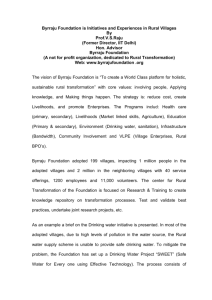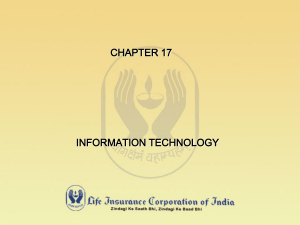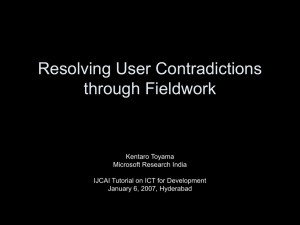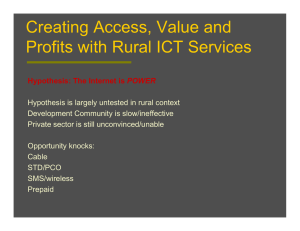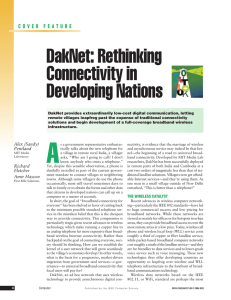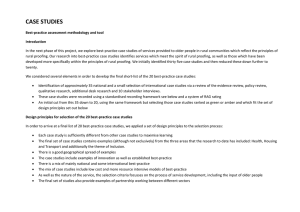• How can they stand up and be counted? education?
advertisement
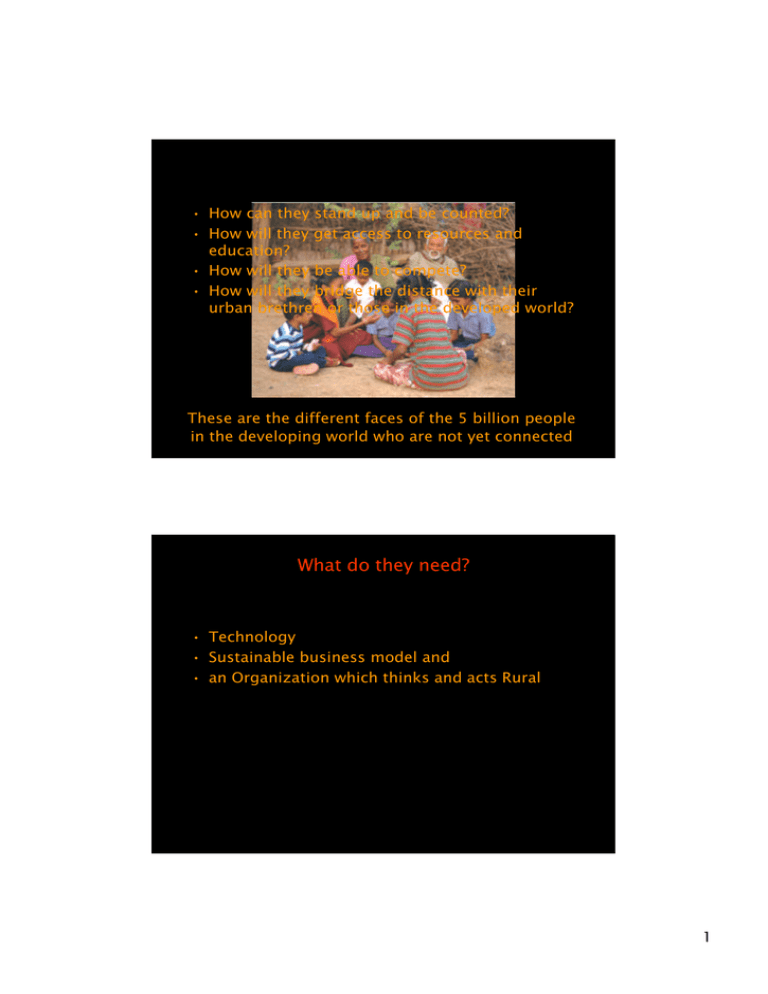
• How can they stand up and be counted? • How will they get access to resources and education? • How will they be able to compete? • How will they bridge the distance with their urban brethren or those in the developed world? These are the different faces of the 5 billion people in the developing world who are not yet connected What do they need? • Technology • Sustainable business model and • an Organization which thinks and acts Rural 1 Wireless systems can connect most of these villages • Technologies are continually evolving • Costs keep going down • Bit rates keep increasing 300 villages • In India, fibre connectivity to most county towns (talukas) provided by State-owned incumbent • 85% of villages lie within 20 Km radius of talukas – Fibre has capability for infinite bandwidth – Typically 300 villages in 30 Km radius Technology To PSTN To Internet US$ 150 per line price •1 million lines being deployed – With exchange and tower in the Town, gives wide geographical coverage of up to 35 Km radius – Works at even 55ºC, with low power requirement (1 KW) and extremely low startup costs – Jointly developed by the Indian Institute of Technology, Madras and Midas Communication Technologies – Provides simultaneous tollquality voice & dedicated Internet connectivity of up to 100/200 Kbps for each and every user – Always-ON Internet – a unique feature that supports the use of the Internet regardless of time and place – Enables a wide range of services suited for rural needs at bandwidths of even 64 Kbps 2 Business Model • Rural Service Provider – n-Logue Communications – The organization that thinks and acts rural – Recruits kiosk operators, provides on-site training and technical support and helps in maintenance, upgradation, etc. – Enables setting up of the kiosk infrastructure • including multimedia PC with web camera, printer, power back-up, software etc. at a cost of just US$ 1000 – Partners with the Government, NGOs, private enterprises, educational institutions, hospitals to offer various services through the kiosk Business Model • Local entrepreneur – Should have studied up to grade 10 with no prior computer training – Should have ability to effectively communicate and network in the community – Provides telephony, Internet access and various services to the local community – Channels information needs of community to application and content providers – Needs to earn US$ 75 p.m. providing • computer education, photography, DTP, typing, email, voice/video mail, eGovernance and other services 3 Services offered at kiosks through multiparty video conferencing distance education, e-Governance, telemedicine, veterinary care, agricultural support etc. The possibilities are endless… Medical diagnostic kit consisting of BP, temperature & ECG Rural ATM atOffice just US$ package 1000 in with Indian finger languages print authentication measurement and stethoscope at just US$ 200 4 In the future, a kiosk can be a • Communication hub providing 50 telephone and Internet connections in a village • Center for virtual university / training center • Technology support center • Support center for Entrepreneurship • Banking or micro finance outlet • Trading & Agricultural support outlet • A medical support center and more… It can bring smiles and prosperity Is this replicable in other developing economies? • Replicable – Business as drivers for connectivity – Aggregation of demand where incomes are low – Technology designed for specific conditions • Not necessarily replicable – Specific technologies and business models that has worked in India 5 In summary • Technologies can impact lives provided there is a big enough vision behind it • To achieve the dream of truly connecting the rural populace – Finance, Commerce, Training & Information are key – Driving education, health and entrepreneurship is the means – Large number of innovative technologies and applications catering specifically to rural areas need to be developed 6

